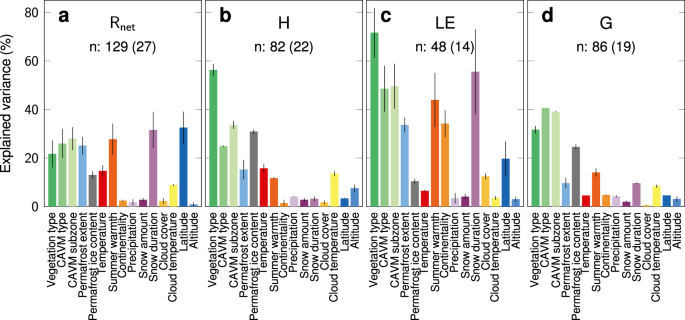樹木の耐性、水増し Trees’ tolerance, watered down
2023-01-11 カリフォルニア大学リバーサイド校(UCR)
この研究の目的の一つは、人工的な灌漑が樹木の炭素と水の使用にどのような影響を与えるかを理解することである。そこで研究者たちは、南カリフォルニアの海岸から砂漠までの都市部に広がる30種の樹木を調査しました。そして、これらの樹木と、同じ樹種が自生している場所を比較しました。
「特に砂漠地帯に向かうにつれて、同じ種類の都市部の木は、乾燥に強いと考えられている木でさえ、自然の木よりもはるかに多くの水を使うことがわかりました」と、研究の主導者でカリフォルニア大学リバーサイド校の元植物学大学院生、現在米国地質調査所のピーター・イブセン氏は述べました。
この研究結果は、英国王立協会が発行する学術誌『Biology Letters』に掲載されています。
南カリフォルニアで最も一般的な街路樹を探し出し、木の根元の面積が少なくとも65%以上灌漑されていることを確認しました。ユーカリ、ツリーフィカス、クレープマートル、スイートガム、ライブオーク、ジャカランダ、スズカケノキ、ブラジルコショウなど、おなじみの樹種が研究対象になった。
乾燥に強い樹木は、気温が上昇したときに乾燥から身を守るため、水分の使用を制限することが多い。しかし、灌漑された木は、フィカスを除いて、すべて水の摂取量が増えていた。「一般的に、水を節約しているわけではないのです」とイブセン氏。「余分な水があれば、それを全部使ってしまうのです」。
研究の一環として、研究者は、木の芯に穴を開けて木の密度を測定し、葉を採取してその厚さや他の物理的特性を測定し、木を通して水を動かすのにかかる圧力の大きさを測定しました。
木の密度が高い木は、一般的に成長が遅く、茎を通る水の量も少なくなります。少なくとも自然環境では、より多くの水が通っていれば、木の密度は低くなっています。「都市部では、木の密度と水の使用量の関係は崩れます」とIbsen氏は言います。また、この研究の対象となった樹木は、野生の樹木とは異なり、一般に高い割合で大気から炭素を吸収していることがわかりました。炭素が多いほど、光合成の能力も高くなり、より多くの葉をつけることができます。
このように、都市の木々はその行動において非常にユニークであり、独自の生態系を持つ木々として分類することができる。「都市の森林は、地球上の他の場所にも存在する種でありながら、地球上の他のものとは異なっています」とイプセンは述べています。水を与えすぎた木が、水を取り除けば乾燥状態でも生長する能力を取り戻せるかどうかは不明である。また、木が成長し、その特性を維持するために、人が与えるべき具体的な水の量も不明である。この2つの問題は、研究者たちが今後、研究していく分野である。
<関連情報>
- https://news.ucr.edu/articles/2023/01/11/landscaping-drought-were-doing-it-wrong
- https://royalsocietypublishing.org/doi/10.1098/rsbl.2022.0448#pane-pcw-details
灌漑された都市の樹木は、自然林と比較してより大きな機能的形質の可塑性を示す Irrigated urban trees exhibit greater functional trait plasticity compared to natural stands
Peter C. Ibsen,Louis S. Santiago,Sheri A. Shiflett,Mark Chandler and G. Darrel Jenerette
Biology Letters Published:04 January 2023
DOI:https://doi.org/10.1098/rsbl.2022.0448

Abstract
Urbanization creates novel ecosystems comprised of species assemblages and environments with no natural analogue. Moreover, irrigation can alter plant function compared to non-irrigated systems. However, the capacity of irrigation to alter functional trait patterns across multiple species is unknown but may be important for the dynamics of urban ecosystems. We evaluated the hypothesis that urban irrigation influences plasticity in functional traits by measuring carbon-gain and water-use traits of 30 tree species planted in Southern California, USA spanning a coastal-to-desert gradient. Tree species respond to irrigation through increasing the carbon-gain trait relationship of leaf nitrogen per specific leaf area compared to their native habitat. Moreover, most species shift to a water-use strategy of greater water loss through stomata when planted in irrigated desert-like environments compared to coastal environments, implying that irrigated species capitalize on increased water availability to cool their leaves in extreme heat and high evaporative demand conditions. Therefore, irrigated urban environments increase the plasticity of trait responses compared to native ecosystems, allowing for novel response to climatic variation. Our results indicate that trees grown in water-resource-rich urban ecosystems can alter their functional traits plasticity beyond those measured in native ecosystems, which can lead to plant trait dynamics with no natural analogue.



